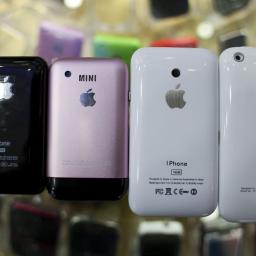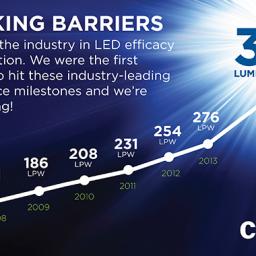
Home Depot filed an antitrust lawsuit in federal court this week against credit card giants Visa and MasterCard for blocking the adoption of chip-and-PIN on credit card transactions. Instead, the companies adopted the less secure chip-and-signature method, which does not prevent lost and stolen cards from being used. Merchant groups, consumer advocacy groups and even the Federal Bureau of Investigation (FBI) called attention to the need to adopt chip-and-PIN in order to take full advantage of EMV security. According to data compiled by the U.S. Federal Reserve, transactions routed over Visa's or MasterCard's signature debit networks
cost retailers more than twice as much as transactions routed over PIN networks.
Home Depot's case against Visa and MasterCard is similar to one Walmart recently filed against Visa. In that case, Walmart says that Visa is precluding the retailer from requiring PINs on all debit card transactions. As a result, Walmart is forced to pay the fees associated with signature-based networks. For the world's largest retailer, that figure is in the billions.
Visa and MasterCard, along with groups such as the American Bankers Association, have said that requiring PINs with credit card transactions could cause confusion for consumers. Visa has also said that newer, better authentication technologies (such as biometric and geo-location verification) are just over the horizon.

Apple is one of the biggest targets when it comes to Chinese smartphone knockoffs - it's not uncommon to hear about a device being sold overseas that looks strikingly similar to the iPhone. So it came as a surprise on Friday when a battle between Apple and China over an iPhone patent entered the public eye, calling Apple a copycat manufacturer.
Chinese manufacturer Shenzhen Baili alleges the iPhone 6 and 6 Plus designs infringe upon its own 100C smartphone intellectual property, according to a Wall Street Journal report. The case is currently being reviewed by the Beijing IP Court. Apple has been copied so many times by Chinese manufacturers that it's hard to take Shenzhen Baili seriously. To hit home that point,
we've rounded up 6 of the best fake iPhones and other Apple products that have popped up in China.
The last audio cassette company in the country held on tight as its former competitors abandoned cassettes for CD production. Now that analog has begun to make a comeback, the National Audio Company, or NAC, owns its market and
is making more cassettes than ever before. When everyone jumped on the CD boat in the late 90s, NAC wasn't hurt because its customers were mostly spoken-word performers and people just buying blank media. So the company began slowly buying and rehabbing its competitors' equipment. "We were preparing ourselves to pick the music market up when it came back, and that's exactly what happened." Now NAC is making cassettes for Metallica, a special release of the Guardians of the Galaxy soundtrack, and what looks like countless basement recordings from smaller bands.
Banking so heavily on retro nostalgia is tricky, because what's retro and what's just old changes fairly often. Watch
the full video, from Bloomberg.

A radical new solution is being proposed to solve the housing crisis -
homes that float. Designers say homes that would rise with flood waters could be built on land otherwise deemed unsuitable because of flooding concerns. Each home can react to flood risk because the guide piles allow the building to rise in significant flood conditions, because of the buoyant basement structure. As flood waters recede the houses resettle to their original levels.
This is hardly the first attempt to develop land vulnerable to flooding. There are 20,000 fully-floating and can-float homes already built in the Netherlands.
Back in the mid-1870s, Sacramento, California
raised the level of its downtown by approximately 10 feet (3 meters) to eliminate devastating flooding. They built reinforced brick walls on downtown streets, and filled the resulting street walls with dirt. Building owners either raising their building slowly with the use of numerous screw jacks, or buried the ground floor. Thus the previous first floors of buildings became the basements.
Of course these solutions are no help if it is just the value of your house and mortgage that is "underwater".
A startup called HMD Global Oy (Helsinki, Finland) has been formed to takeover the Nokia brand for mobile phones and tablet computers and has said it intends to spend $500 million marketing Nokia as an Android-based mobile device over the next three years. HMD is owned by Smart Connect LP, a private equity fund managed by Jean-Francois Baril, a former Nokia executive, as well as by HMD management. As part of the same deal, Microsoft is selling remaining feature phone business assets to FIH Mobile Ltd., a subsidiary of Hon Hai Precision Industries (trading as Foxconn Technology Group).
HMD said it will produce smartphones and tablets that run the Android operating system. However while it is clear that HMD/Nokia will not be a manufacturers of mobile devices it remains unclear as to whether it will even perform its own design. The whole focus of the launch announcement was that HMD would focus on marketing and brand. It may yet also outsource the design of its devices and focus on putting its brand in front of consumers eyes and developing services that are accessed through those devices.
http://www.eetimes.com/document.asp?doc_id=1329712A generating tower at the world's largest solar energy plant was shut down Thursday after a mirror misalignment caused sunlight to burn through electrical wiring and start a small fire, according to officials. The blaze broke out around 9:30 a.m. Officials said that flames could be seen near the ninth floor of the Unit 3 tower, but that they had apparently died out by the time firefighters arrived.
The plant is located near Interstate 15, just inside the California border southwest of Primm, Nev. It uses enormous mirrors to reflect sunlight to boilers atop three towers. The sun's energy heats the water to more than 1,000 degrees, creating steam that spins electricity-generating turbines. Some misaligned mirrors instead focused sunlight on a different spot, which caused the electrical cables to catch fire. Only one of three towers is currently operating, with the fire shutting down one and another undergoing maintenance, Dusenbury said.
http://www.latimes.com/local/lanow/la-me-ln-solar-plant-fire-20160520-snap-story.html
Being the first four-seat passenger plane relying primarily on a hydrogen fuel cell, the HY4 will take off to its maiden flight during the upcoming summer. The powertrain of this twin-fuselage, single-engine plane consists of a hydrogen storage unit, a low-temperature hydrogen fuel cell and a high-performance battery. The fuel cell converts the hydrogen energy directly into electric energy, powering the propeller. The only by-product in this process is pure water. If the hydrogen needed for the conversion process is generated in an electrolysis process powered through renewables, the HY4 flies completely emission-free.
The HY4 powertrain has already been tested successfully in the lab. To create enough lift to take off, the system must provide the maximum takeoff performance reliably for at least three minutes. During the test, the developers already succeeded in running the system for more than ten minutes at maximum power. The interplay between fuel cell and the battery, which unites the functions of an energy buffer and back-up power system, has also been proved. This paves the way to integrate the powertrain into the plane.
http://www.electronics-eetimes.com/news/fuel-cell-plane-brings-zero-emission-flying-within-reach-0Boeing flight-tested the
first manned fuel cell aircraft back in 2009.
A California start-up named Advanced Rail Energy Storage (ARES) has a clever idea for storing electrical power at the most extreme scales, e.g. those of the power grid itself. It's a battery of sorts. The scheme include
a really big hill and a few railroad cars. Energy to be stored in the system is first used to pull the rail cars via electric locomotives to the top of the hill, where it persists as potential energy. So long as the cars are at the top of the hill, the initial energy expended to get them up there remains trapped within the system. To recover that energy, the cars are simply lowered down the hill, turning built-in motor-generators in the process. This power is collected and then returned to the grid. The system is able to recover 80 percent of the power that it takes in, which is better than pumped-storage hydro (due to evaporation) or most batteries.
Earlier this month, ARES won approval from the Bureau of Land Management for a lease of 156 acres in southern Nevada featuring some train tracks on a hill and connectivity to the greater western US power grid. The 50 megawatts facility is not huge (enough to power 15,000 or so homes) but ARES imagines large regional facilities capable of 2 to 3 gigawatts in the future.

Cree's newly announced XP-G3 model of LED delivers 31% more lumens (lm) and 8% higher lm/W than its predecessor. Offering
over 205 lm/W at 350mA, this marks the first time commercially-available LEDs have exceed the efficiency of low-pressure sodium lamps, commonly found in municipal streetlights. OrangeTeK has already announced they are designing a new model of streetlight with XP-G3 LEDs. In practice, however, it's likely that most users of XP-G3 LEDs will run them at higher power with reduced efficiency, rather than install five times as many LEDs, due to price. Any efficiency improvements are good news, however, as numerous cities have already installed LED streetlights, and many more have plans in the works. This seems to be motivated by the whiter appearance of LEDs compared to sodium lights, which is ironically the major source of
opposition from the public, who complain about LED streetlights keeping them up at night, among other concerns.
Philips had previously demonstrated 200lm/W LEDs, and
claimed they'd be available to consumers by 2015, but a search of current products only reveals far less-efficient models. The XP-G3 is available for order right now. Cree has previously demonstrated LEDs in the lab that deliver
up to 303 lm/W, which is half-way to the maximum theoretical efficiency of this technology. Estimates are that as much as one quarter of the world's electrical consumption is used for lighting. Most consumers could see significant savings just by switching to florescent or LED lights in the first place. About
50 percent of lights sold in the US are halogen incandescents, which are only one quarter as efficient as LEDs, have far shorter operational lifetimes, and cost about one quarter as much.
A widely distributed scam email that quotes people's actual postal addresses, links to a dangerous form of ransomware called Maktub. The phishing emails told recipients they owed hundreds to businesses and that they could print an invoice by clicking on a link - but that leads to malware. "It's incredibly fast and by the time the warning message had appeared on the screen it had already encrypted everything of value on the hard drive - it happens in seconds. This is the desktop version of a smash and grab - they want a quick payoff."
Maktub doesn't just demand a ransom, it increases the fee - which is to be paid in bitcoins - as time elapses. During the first three days, the fee stands at 1.4 bitcoins, or approximately $580. This rises to 1.9 bitcoins, or $790, after the third day.
It's still not clear how scammers were able to gather people's addresses and link them to names and emails. The data could have come from a number of leaked or stolen databases. For some individuals without backups, paying the ransom might be the only way to retrieve their data. "However, every person that does that makes the business more valuable for the criminal and the world worse for everyone."
https://packetstormsecurity.com/news/view/26517/The-Ransomware-That-Knows-Where-You-Live.html Home Depot filed an antitrust lawsuit in federal court this week against credit card giants Visa and MasterCard for blocking the adoption of chip-and-PIN on credit card transactions. Instead, the companies adopted the less secure chip-and-signature method, which does not prevent lost and stolen cards from being used. Merchant groups, consumer advocacy groups and even the Federal Bureau of Investigation (FBI) called attention to the need to adopt chip-and-PIN in order to take full advantage of EMV security. According to data compiled by the U.S. Federal Reserve, transactions routed over Visa's or MasterCard's signature debit networks cost retailers more than twice as much as transactions routed over PIN networks.
Home Depot filed an antitrust lawsuit in federal court this week against credit card giants Visa and MasterCard for blocking the adoption of chip-and-PIN on credit card transactions. Instead, the companies adopted the less secure chip-and-signature method, which does not prevent lost and stolen cards from being used. Merchant groups, consumer advocacy groups and even the Federal Bureau of Investigation (FBI) called attention to the need to adopt chip-and-PIN in order to take full advantage of EMV security. According to data compiled by the U.S. Federal Reserve, transactions routed over Visa's or MasterCard's signature debit networks cost retailers more than twice as much as transactions routed over PIN networks. 


